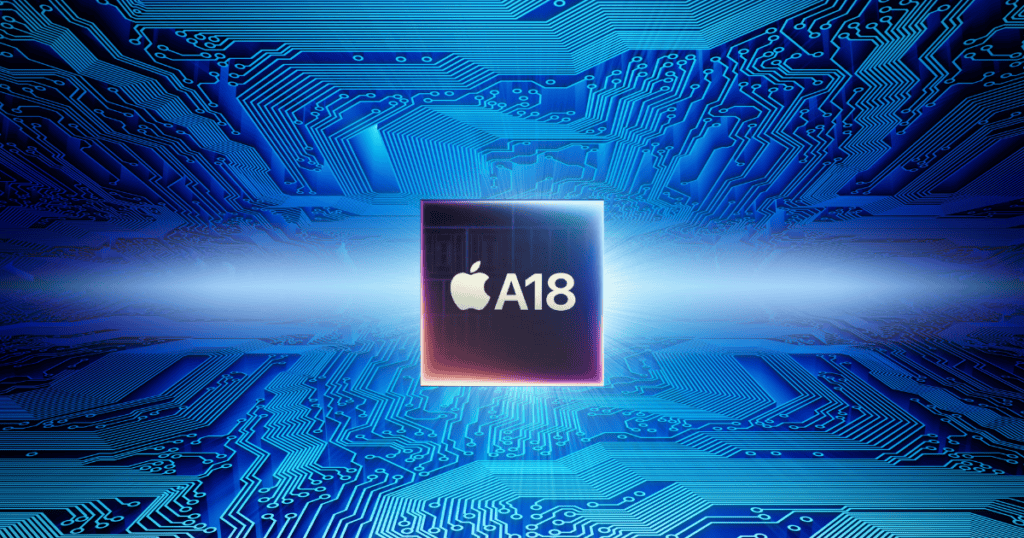The comparison between the A18 and A18 Pro reveals intriguing distinctions in performance and features that cater to different user needs. While both models showcase a robust 6-core CPU and advanced 16-core Neural Engine, their GPU capabilities and memory optimizations set them apart markedly. The A18 targets general users with its impressive yet standard performance metrics, whereas the A18 Pro aims at power users seeking enhanced efficiency and speed. As we explore these differences further, it becomes essential to reflect on how these variations impact real-world application and user experience.
A18 Vs. A18 Pro Overview
The A18 and A18 Pro represent the latest advancements in system-on-chip (SoC) technology, both featuring a sophisticated 6-core CPU configuration composed of 4 performance cores and 2 efficiency cores, all fabricated on a cutting-edge 3-nanometer process. This architecture allows for considerable improvements in both processing power and energy efficiency, catering to a wide range of applications.
In terms of graphics capabilities, the A18 is equipped with a 5-core GPU, while the A18 Pro boasts a more powerful 6-core GPU. This enhancement translates to improved graphics performance, with the A18 delivering a 40% increase over the previous A16 Bionic and the A18 Pro achieving a remarkable 20% boost over the A17 Pro.
Additionally, both chipsets incorporate a 16-core Neural Engine, capable of executing up to 35 trillion operations per second, thereby considerably enhancing machine learning and AI tasks.
Both A18 and A18 Pro feature an upgraded memory subsystem, offering 17% more memory bandwidth, further contributing to their overall performance in demanding applications. This combination of advanced CPU and GPU technologies positions the A18 and A18 Pro as formidable contenders in the SoC landscape.
Shared Features of A18 and A18 Pro
The A18 and A18 Pro chips both represent significant advancements in system-on-chip (SoC) technology. Built on a second-generation 3-nanometer process, they offer substantial improvements in both performance and efficiency. Each features a 6-core CPU with four performance cores and two efficiency cores, providing a balanced processing solution for a wide range of tasks.
Both chipsets also boast a 16-core Neural Engine, capable of executing up to 35 trillion operations per second (TOPS), which enhances machine learning and AI-driven applications. Additionally, the memory subsystem has received a 17% boost in bandwidth, improving multitasking and data handling efficiency.
A key feature of both chips is hardware-accelerated ray tracing, which dramatically improves graphics performance, making it particularly beneficial for gaming and visually intensive applications.
Below is a comparison table outlining the similarities between the A18 and A18 Pro:
| Feature | A18 | A18 Pro |
|---|---|---|
| Process Technology | 3-nanometer (2nd generation) | 3-nanometer (2nd generation) |
| CPU Configuration | 6-core (4 performance, 2 efficiency) | 6-core (4 performance, 2 efficiency) |
| Neural Engine | 16-core, 35 TOPS | 16-core, 35 TOPS |
| Memory Bandwidth | 17% increase from previous gen | 17% increase from previous gen |
| Ray Tracing | Hardware-accelerated | Hardware-accelerated |
| Primary Use Case | General performance | Enhanced gaming and professional applications |
Both the A18 and A18 Pro stand out for their advanced computing capabilities, with the A18 Pro being better suited for more demanding tasks like gaming and professional-grade applications due to potential optimizations in areas such as graphics processing.
A18 Features in iPhone 16
The A18 chip, powering the iPhone 16, introduces several key advancements in processing power and efficiency, making it a significant leap from its predecessor, the A16 Bionic.
- 6-Core CPU: Includes four performance cores and two efficiency cores, offering a 30% boost in overall performance compared to the A16.
- 5-Core GPU: Enhances graphics processing by 40%, improving gaming and visual experiences.
- 16-Core Neural Engine: Executes machine learning tasks twice as fast as the A16, optimizing AI applications and complex task processing.
- Improved Memory Bandwidth: With a 17% increase in memory bandwidth, the chip handles multitasking and demanding applications more effectively.
- Advanced Thermal Design: Enhances heat dissipation by 30%, ensuring sustained performance during prolonged use.
These features make the iPhone 16 a powerhouse device, fully utilizing the A18 chip’s enhanced capabilities to deliver superior performance, graphics, and multitasking efficiency.
A18 Pro Features in iPhone 16 Pro
The A18 Pro chip in the iPhone 16 Pro delivers cutting-edge performance, featuring a 6-core CPU with 2 performance cores and 4 efficiency cores. This configuration boosts overall processing speed by 30% compared to the A16 Bionic, making it ideal for users who prioritize both efficiency and speed.
In addition to the CPU upgrades, the A18 Pro’s 6-core GPU enhances graphics by 20%, with support for hardware-accelerated ray tracing, elevating the gaming experience to a new level of realism.
The 16-core Neural Engine doubles the speed of machine learning tasks, optimizing AI-driven functionalities and improving performance across various applications.
Thermal management is also improved, providing 20% better sustained performance during demanding tasks like extended gaming sessions. With a 17% increase in memory bandwidth, the A18 Pro ensures smooth multitasking and better handling of intensive applications.
Key Features of A18 Pro:
- 6-Core CPU: 30% faster performance with 2 performance cores and 4 efficiency cores.
- 6-Core GPU: 20% better graphics performance, including hardware-accelerated ray tracing.
- 16-Core Neural Engine: Executes AI and machine learning tasks twice as fast.
- Enhanced Thermal Architecture: Improves sustained gaming performance by 20%.
- Memory Bandwidth: 17% more bandwidth for smoother multitasking and app handling.
These innovations make the A18 Pro chip a top-tier component in mobile computing, solidifying the iPhone 16 Pro’s place as a leader in smartphone technology.
A18 Performance Analysis
The A18 chip, building on the advancements seen in the A18 Pro, showcases impressive performance enhancements that set it apart from its predecessor, the A16 Bionic.
Featuring a 6-core CPU architecture with 4 performance cores and 2 efficiency cores, the A18 delivers a notable 30% increase in processing power. This improvement is complemented by a 5-core GPU that offers a remarkable 40% boost in graphics performance while consuming 35% less power, ensuring energy efficiency without compromising visual fidelity.
Moreover, the A18’s Neural Engine stands out, capable of executing up to 35 trillion operations per second, marking a significant 2x acceleration in machine learning tasks compared to the previous generation. This allows for enhanced AI-driven functionalities across applications.
The chip also benefits from a memory subsystem that provides 17% more bandwidth, further optimizing performance efficiency.
Additionally, the inclusion of hardware-accelerated ray tracing capabilities enables console-quality gaming experiences, elevating the A18’s value for gamers.
A18 Pro Performance Analysis
With a focus on enhanced efficiency and performance, the A18 Pro chip represents a notable advancement in mobile processing technology. The A18 Pro CPU delivers an impressive 30% faster performance compared to the previous A16 Bionic, all while consuming 20% less power than the A17 Pro CPU.
This efficiency is complemented by a 6-core GPU that offers 20% faster performance over the A17 Pro’s GPU and supports advanced hardware ray tracing capabilities, operating at twice the speed.
The A18 Pro’s Neural Engine further elevates its capabilities, performing up to 35 trillion operations per second (TOPS), making it 2x faster for machine learning tasks compared to the A16’s Neural Engine.
Additionally, the chip features an upgraded memory subsystem, providing 17% more memory bandwidth, which enhances its ability to manage demanding applications and multitasking with ease.
This combination of faster performance, improved memory bandwidth, and advanced graphics rendering guarantees that the A18 Pro chip excels in handling intensive tasks, ultimately offering users a seamless experience during multimedia playback and complex processing activities.
Key Differences Between A18 and A18 Pro
The A18 and A18 Pro chips share several core similarities, but they diverge significantly when it comes to graphics performance and overall processing power. One of the standout differences is the GPU configuration. The A18 Pro features a 6-core GPU, delivering a 20% performance boost over the A18’s 5-core GPU. This additional core, along with hardware-accelerated ray tracing, makes the A18 Pro a superior choice for gaming and graphics-intensive applications.
Both chips are equipped with a 6-core CPU, composed of 4 performance cores and 2 efficiency cores. However, the A18 Pro is distinguished by its larger cache, resulting in enhanced data processing and a 30% performance improvement over the A16 Bionic. This larger cache allows the A18 Pro to better manage complex tasks, making it ideal for power users who demand high-speed processing.
In terms of machine learning, both chips feature a 16-core Neural Engine, capable of executing 35 trillion operations per second (TOPS). Despite the shared architecture, the A18 Pro delivers 2x faster machine learning performance compared to the previous generation, making it highly efficient for AI-driven applications.
Both the A18 and A18 Pro also share a 17% increase in memory bandwidth, enhancing multitasking capabilities and overall performance efficiency.
Comparison Table: A18 vs. A18 Pro
| Feature | A18 | A18 Pro |
|---|---|---|
| GPU Configuration | 5-core | 6-core (+20% performance) |
| Ray Tracing | Hardware-accelerated | Hardware-accelerated (enhanced for gaming) |
| CPU Configuration | 6-core (4 performance, 2 efficiency) | 6-core (4 performance, 2 efficiency) |
| Cache Size | Standard | Larger cache (30% faster vs A16 Bionic) |
| Neural Engine | 16-core, 35 TOPS | 16-core, 35 TOPS (2x faster ML performance) |
| Memory Bandwidth | 17% increase | 17% increase |
| Primary Use Case | General performance and efficiency | Gaming, graphics, intensive applications |
The A18 Pro chip is the clear choice for users who prioritize gaming, graphics-heavy tasks, and professional-grade applications, thanks to its enhanced GPU, larger cache, and superior machine learning performance. Meanwhile, the A18 is more than capable for everyday tasks, offering a balanced mix of performance and efficiency.
MacReview’s Take
To sum up, the A18 and A18 Pro represent distinct tiers of performance tailored to varying user needs. The A18’s 5-core GPU achieves a notable 40% graphics enhancement, catering effectively to general users. In contrast, the A18 Pro’s 6-core GPU, with a 20% increase in graphics performance, alongside improved cache and memory bandwidth, positions it as a superior choice for demanding applications. This differentiation underscores the importance of selecting the appropriate model based on specific performance requirements.




